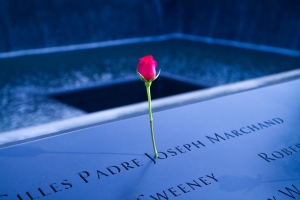“Excerpt: U.S. Public Diplomacy post-9/11: From Messaging to Mutuality”
The 9/11 Commission charged by the U.S. Congress and president with investigating the “facts and circumstances relating to the terrorist attacks of September 11, 2001” and making recommendations for “how [to] avoid such tragedy” in the future had little to say about failures related to the nation’s diplomatic preparedness to combat ideological threats. In fact, the Commission’s conclusions about pre-9/11 diplomacy were summed up in its final report in one sentence:“The diplomatic efforts of the Department of State were largely ineffective.”
In the years since that report was issued, dozens of other reports, papers, articles and books have attempted to do what the Commission did not do, i.e., determine why American diplomacy—specifically public diplomacy, or diplomatic efforts aimed at foreign publics (as opposed to foreign leaders)—was ineffective.
To a large degree, that question has been answered. The marginalization of public diplomacy by U.S. officials after the Cold War, which led to the dissolution of the United States Information Agency in 1999, left a fractured and under-funded public diplomacy system incapable of serving as an effective first line of defense against foreign hostilities.
The more important question of how public diplomacy can be made more effective going forward has not been so easily answered, although considerable energy has been expended trying. Since 9/11, seven (soon to be eight) undersecretaries of state for public diplomacy and public affairs have cycled in and out of the State Department, each offering fresh ideas for how America can “win the hearts and minds” of people abroad. Scholars and practitioners of public diplomacy, as well as policy makers and other informed observers, also have suggested new directions for U.S. public diplomacy in the 21st century.
Ten years after 9/11, however, no consensus has been reached on exactly what an effective public diplomacy should look like or what it should achieve. On one hand are those who believe that in order for public diplomacy to be more effective the United States must do a better job communicating its message to people abroad.This thinking, which was on view throughout the George W. Bush administration, reflects the counsel of the 9/11 Commission, which recommended a two-pronged public diplomacy strategy to “engage the struggle of ideas”: 1) “define what [America’s] message is, what it stands for” and 2) “defend [America’s] ideals abroad vigorously.”5 According to the Commission’s final report, in order to protect the nation in this new era, “[t]he United States must do more to communicate its message.”
On the other hand are a growing number of public diplomacy scholars, practitioners and informed observers who believe that better messaging techniques are not the key to public diplomacy’s effectiveness in a world transformed by globalization and new technology. Rather, a“new” public diplomacy, which is “first of all about promoting and maintaining smooth international relationships,” is required for success in the new global environment.
In order for public diplomacy to be effective, they contend, old forms of diplomatic monologue must be supplemented with (if not replaced by) new forms of diplomatic dialogue and collaboration. As Shaun Riordan argued,“[T]he new security agenda requires a more collaborative approach to foreign policy, which in return requires a new dialogue-based paradigm for public diplomacy.”
What this means for U.S. public diplomacy is a shift from “telling America’s story to the world” as it did both during the Cold War and in the early post-9/11 period to “engaging with the world.” President Barack Obama signaled such a move soon after entering the White House. In his inaugural address, he emphasized principles of mutuality in U.S. international relations, telling the Muslim world “we seek a new way forward based on mutual interest and mutual respect.”10 He later stressed the importance of dialogue and mutual understanding in his widely-quoted Cairo speech, in which he called or a sustained effort “to listen to each other; to learn from each other; to respect one another; to seek common ground.”
This paper applies dialogue theory to U.S. public diplomacy in an effort to assess progress made in building a model of U.S. public diplomacy that will protect and advance national and international interests in a post-9/11 world. The assumption behind the research is that a relational model of public diplomacy based on principles of dialogue and mutuality offers a promising framework for improving U.S. international relations. Such a model reflects both intellectual trends in public diplomacy and the realities of an increasingly interdependent world in which cross-border networks of power have replaced traditional government structures and foreign publics have become more important to a nation’s ability to accomplish its foreign affairs objectives. A relational approach also speaks to the dual mandates of U.S. public diplomacy laid out by the U.S. Congress more than half a century ago: “To enable the Government of the United States to promote a better understanding of the United States in other countries, and to increase mutual understanding between the people of the United States and the people of other countries.”
To read Kathy R. Fitpatrick’s full article in the current issue of CPD Perspectives, click here.
Issue Contents
Most Read CPD Blogs
-
January 2
-
December 15
-
December 17
-
November 25
-
December 17
Visit CPD's Online Library
Explore CPD's vast online database featuring the latest books, articles, speeches and information on international organizations dedicated to public diplomacy.









Add comment